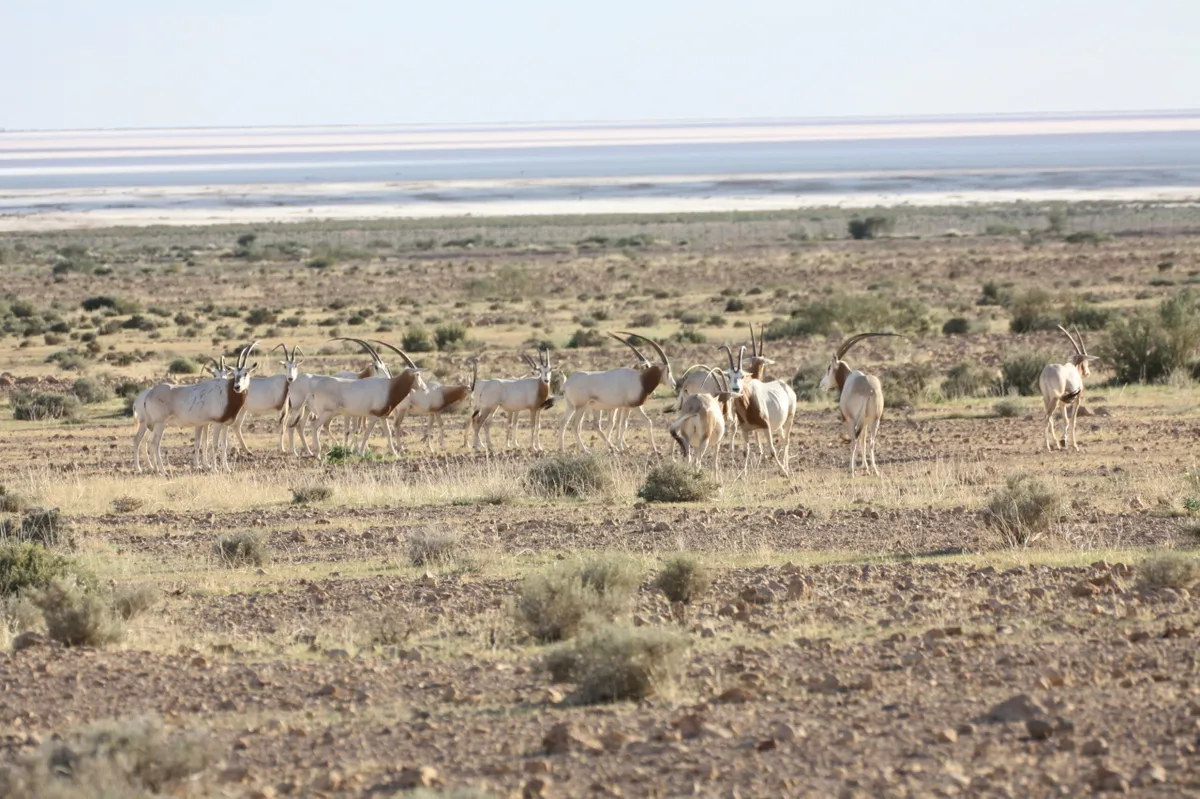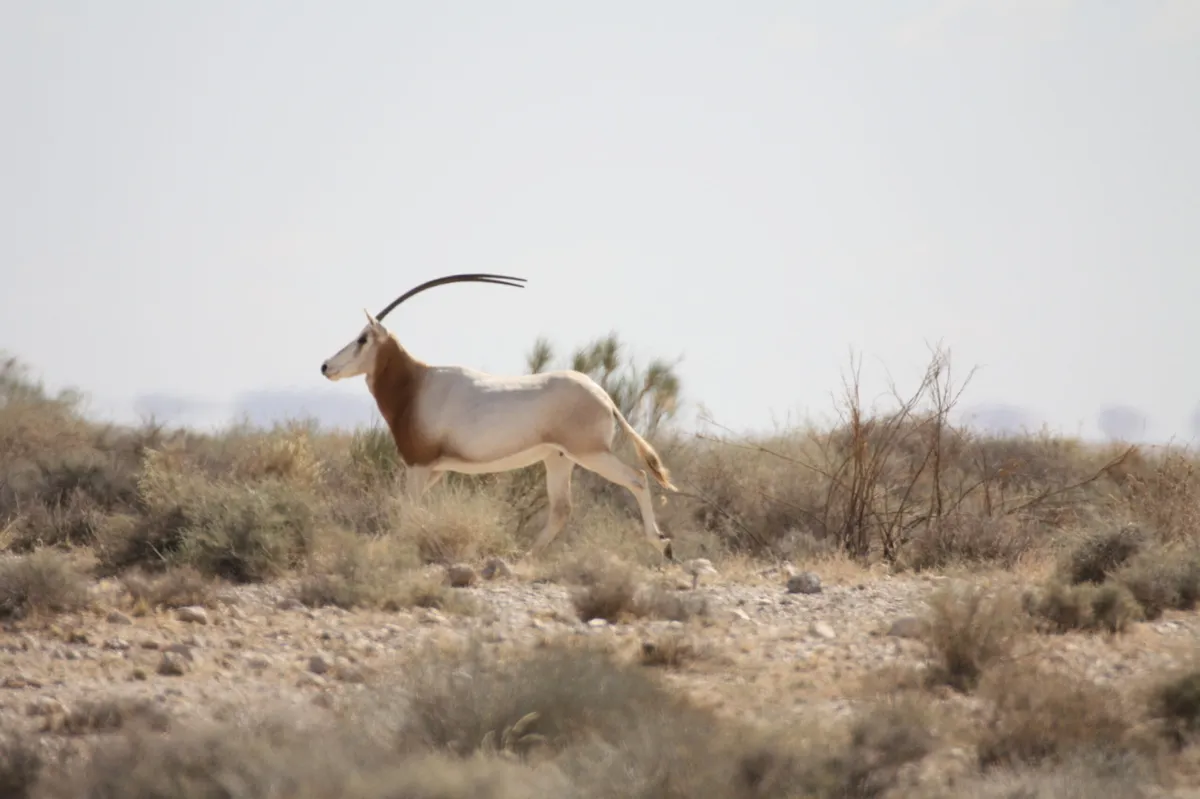A ghostly white coat, deep, dark eyes and huge, curved horns. The scimitar-horned oryx has an almost mythical appearance. Indeed, were it not for long-term conservation efforts, this majestic wanderer of North Africa's sun-baked deserts may well have drifted quietly into folklore.
Once common across Tunisia, Chad and Niger, scimitar-horned oryx experienced rapid population declines in the latter part of the 20th century due to over-hunting, persistent droughts and competition with livestock. They disappeared from the wild altogether by the end of the 1990s and the species was officially declared Extinct in the Wild in 2000.
This desert-dwelling member of the antelope family remained absent from the wild for nearly 20 years. But over this two-decade period, conservationists around the world were hard at work, determined not to let the species slip into legend.
- Why did 200,000 antelopes suddenly drop dead?
- Why rhinos have horns
- The Arabian oryx: how Qatar's national animal came back from the dead
Though Extinct in the Wild, the species remained in existence in captivity, with over 220 zoological institutions involved in a global captive breeding programme. Their efforts paid off, and a series of reintroductions – including the release 14 oryx in 2017 – saw numbers in the wild begin to rise.
Today, thanks to ongoing conservation work, the species has been down-listed from Extinct in the Wild to Endangered, with over 600 individuals now thriving within Chad’s Ouadi Rimé-Ouadi Achim Faunal Reserve, one of the world’s largest protected areas at over 78,000km².

The project is being led by the Environment Agency-Abu Dhabi (EAD) and the Chad Government, and implemented on the ground by Sahara Conservation, along with international partners, including Marwell Wildlife, a zoo and conservation charity based near Winchester in South England.
Marwell has worked with the scimitar-horned oryx since 1972 and, along with Edinburgh Zoo, donated the first group of oryx to Bou Hedma National Park in Tunisia in 1985. Since then, Marwell has co-managed reintroduction projects to a further three protected areas in Tunisia. Between 1989 and 2016, the wildlife charity collected a genetically diverse group of oryx from across European zoos, then transferred them to the EAD for reintroduction to Chad, where they joined the source population.
Genetic diversity is vital to establishing a healthy and sustainable population as it allows the oryx to adapt to changing environmental conditions.

“The change in status of scimitar-horned oryx from Extinct in the Wild to Endangered is a testament to the power of collaborative conservation action, and gives us all hope that we are able to make a real difference and restore nature,” says Dr Tania Gilbert, Head of Conservation Science at Marwell Wildlife.
“The species is still at risk from extinction (Endangered), but the conservation work in Chad, Tunisia, Morocco and Senegal greatly reduces this risk and has given the species a real chance of recovery.”
Professor Philip Riordan, Director of Conservation, adds: “Our journey to restore scimitar-horned oryx and its habitats is a testament to the power of persistence and belief in the possible. We believe that humanity can correct its past mistakes, and modern zoos and aquaria are perfectly placed to lead these conservation efforts.”

- The unicorn is the national animal of Scotland
- Why deer have antlers
- Scientists believe the ‘Siberian unicorn’ lived alongside modern humans
What is a scimitar-horned oryx?
The scimitar-horned oryx (Oryx dammah) is one of four species of oryx, a genus of the antelope family. They are mostly white with red-brown necks and shadow-like markings between their eyes and nose. The light coat is an adaptation that prevents them from overheating in the desert.
The long, ridged, curved horns of the oryx can grow over a metre long, while the animal itself can reach heights of up to 2.3 metres, and weigh as much as 210 kilograms.
Scimitar-horned oryx are well adapted to desert life. Much like camels, they have enlarged hooves that allow them to walk easily on soft sand. Their eyelashes are dense and their eyelids tough, protecting them against windblown sand. They also have black tongues, which helps to protect them from sunburn.
Like many desert animals, scimitar-horned oryx can withstand a rise in body temperature by several degrees before they begin to sweat, meaning they can cope for long periods without water.
Images and video/credit: Marwell Zoo
